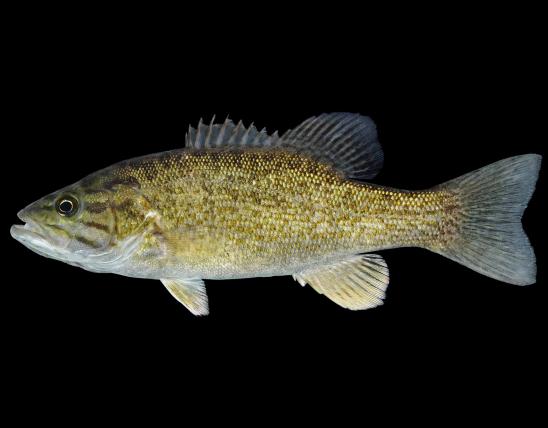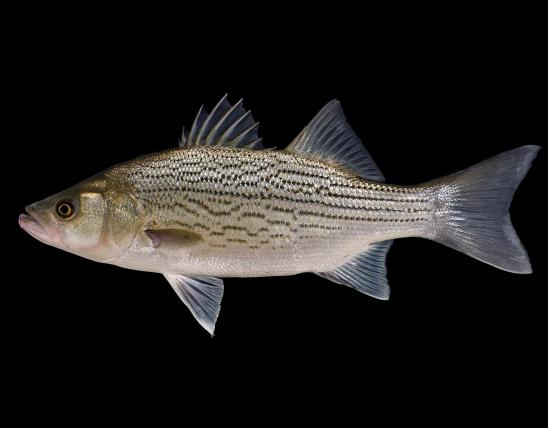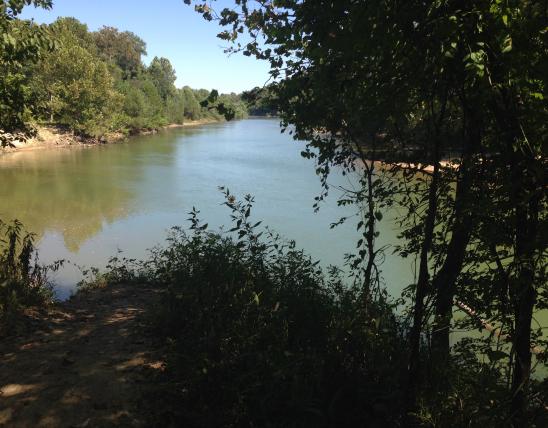
The spotted bass is a large, elongated fish with a large mouth. The upper jaw reaches to or only very slightly beyond the rear margin of the eye in adults. Overall color is green with a dark horizontal stripe. The upper parts are greenish with darker mottlings; the lower sides and belly are whitish with dark spots arranged in streaks. The midside has a broad, dark continuous stripe. The cheek scales are much smaller than the rest of the body scales. The tongue has a rough patch.
Similar species: The closest relatives in Missouri are the largemouth and smallmouth basses. The three are in genus Micropterus, whose members are generally called black basses.
Total length: 10–17 inches; weight: ½–3½ pounds; maximum about 20 inches and 4–5 pounds.

Species has 2 distribution centers in Missouri: lowland ditches and larger streams of southeast Ozarks, and the western periphery of the Ozarks, including parts of the White, Spring, and Missouri river systems.
Habitat and Conservation
This species generally inhabits permanent-flowing waters that are warmer and slightly more turbid than those where the smallmouth bass occurs. In the main channels of large rivers within its area of occurrence, it occurs almost to the exclusion of other black basses. It is abundant in most large Ozark reservoirs, where it generally is found at depths greater than those occupied by other black basses.
In cool, spring-fed streams, however, it is largely replaced by the smallmouth bass. In backwaters and floodplain lakes along streams, it is largely replaced by the largemouth bass.
In the Bootheel lowlands, this is the most abundant species of black bass in flowing waters. Elsewhere in its Missouri range, it is the most abundant black bass in the larger streams. In large Ozark reservoirs, this species is more abundant than the smallmouth bass.
Although its habits are much like those of the smallmouth, the spotted bass is a more active fish. It is most active at dawn and dusk.
Food
Carnivorous, feeding on crayfish, fish, and immature aquatic insects. Bass often catch their prey by ambushing from a place of hiding. Suction created when the rather large mouth is suddenly opened helps them capture prey.
Status
Game fish.
Life Cycle
Spotted bass apparently move annually between larger rivers and reservoirs and their smaller tributaries. They appear in the smaller streams after high water in the spring and return to larger waters in the fall.
At any given locality, spotted bass begin nesting a few days later than smallmouths. In Missouri, nesting activity is most intense from mid-April to early June. Nests are similar to those of the smallmouth, and both species sometimes nest simultaneously in the same stream pools. During the first 4 years of life, the growth rate of spotted bass is slightly faster than that of the smallmouth, but it is slower after that.
Individuals can live for about 6 years.
Human Connections
The spotted bass is an important game fish in Missouri's larger streams and reservoirs, although it is less desirable because of its smaller size. Fishing methods are similar to those for taking largemouths and smallmouths.
Ecosystem Connections
Introduced populations of spotted bass tend to replace the smallmouth through hybridization and competition.



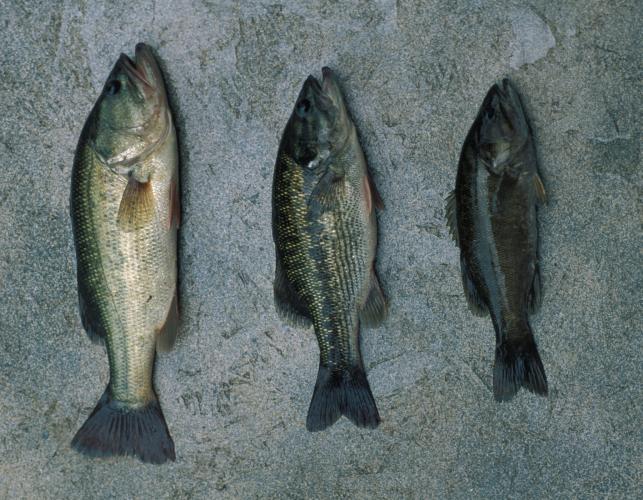



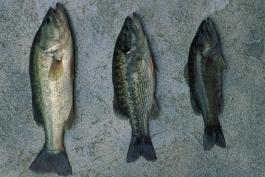
Where to See Species
At times of low water, some watercraft may have difficulty launching.






















